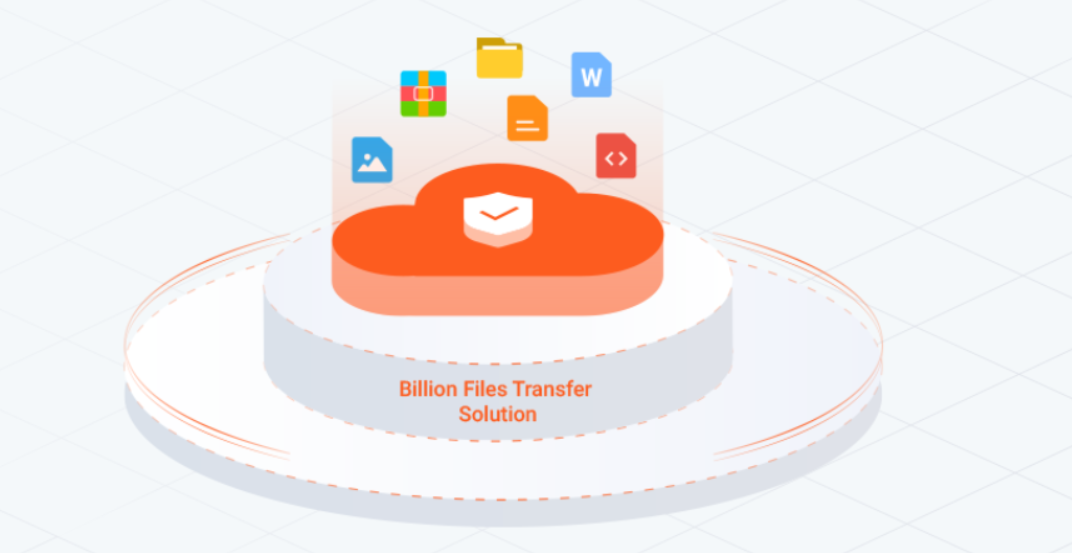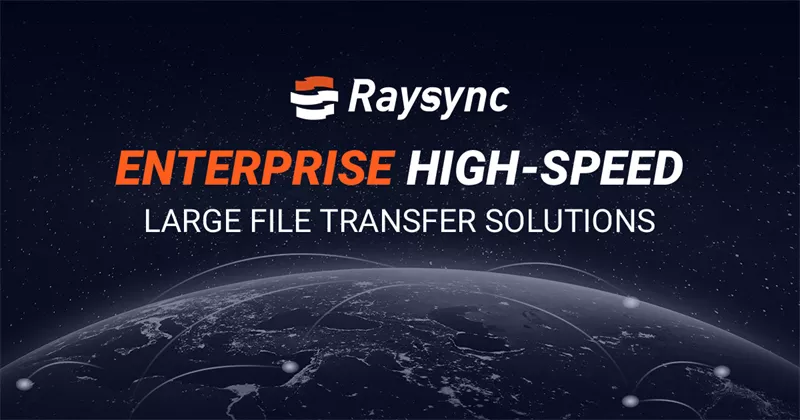Top 3 Secure File Share Solutions Recommended
September 4, 2024In today's digital landscape, secure file sharing is paramount. This blog post introduces the top three secure file transfer solutions designed to protect your sensitive data from cyber threats.
These solutions offer robust security features and reliable performance, ensuring your files remain safe during transmission.

Why Should Business Choose Secure File Share Solutions
In a world where data breaches make headlines daily, businesses can’t afford to take risks with their file-sharing methods.
Secure file sharing solutions provide more than just a way to send documents—they offer peace of mind. These solutions make sure that your sensitive information is encrypted, protected from unauthorized access, and compliant with industry regulations.
Whether it's customer data, financial records, or intellectual property, keeping these files secure is important to maintaining your business's reputation and avoiding security damages. Simply put, secure file transfer solutions are the digital equivalent of a bank vault for your data.
How to Choose Secure File Share Solutions
Selecting the right secure file share solution for your business involves more than just picking the first option you come across.
Here’s a quick guide to help you make the best choice:
- Know Your Needs: Start by assessing what your business requires—do you need basic file sharing, or something more robust like real-time collaboration and advanced security features?
- Security Features: Look for solutions that offer end-to-end encryption, multi-factor authentication, and secure data storage. Ensure compliance with relevant regulations like GDPR or HIPAA.
- Ease of Use: The solution should be user-friendly, allowing easy access and sharing of files without compromising security. A complicated interface can lead to mistakes and inefficiencies.
- Scalability: Choose a solution that can grow with your business. Whether you're expanding your team or handling larger file transfers, the platform should be able to scale accordingly.
- Cost-Effectiveness: Compare pricing plans to make sure you're getting value for money. Don’t forget to factor in any additional costs for extra storage or advanced features.
Top 3 Secure File Share Solutions Recommended
Let’s look at the top 3 secure file share solutions that stand out in 2025, helping you make an informed decision for your business:
1. Raysync
Raysync is a leading name in the world of secure file transfer solutions. Known for its high-speed data transmission and military-grade encryption, Raysync is designed for businesses that need to move large amounts of data securely and efficiently.
Whether you're transferring files between offices or sharing sensitive documents with clients,
Raysync is among the list of reliable and secure file transfer solutions that make sure your data stays safe from prying eyes.
Its intuitive interface makes it easy for teams to collaborate, while its powerful backend ensures that even the largest files are transferred without much hassle.
Pros:
- High-speed file transfers
- Military-grade encryption
- User-friendly interface
- Supports large file sizes
Cons:
- As a newly launched tool, brand recognition is a bit lower compared to competitors.
Free Trial Policy: Raysync offers a 15 day free trial that allows you to explore its core features before committing.
2. Kiteworks
Kiteworks is another top contender for secure file share solutions, particularly known for its compliance with stringent industry regulations.
It provides a secure environment for sharing files, emails, and web forms, making it a versatile tool for businesses in regulated industries like finance and healthcare.
Kiteworks focuses on data governance and its centralized platform makes it easy to manage and monitor all file-sharing activities, providing both security and peace of mind.
Pros:
- Compliance with industry regulations
- Centralized management
- Secure email and web form sharing
- Detailed audit trails
Cons:
- Its interface can be complex for new users.
Free Trial Policy: Kiteworks offers a 14 day free trial that allows businesses to test this secure file share solution.
3. SmartVault
SmartVault is a cloud-based document management and secure file transfer solution designed for businesses that need a simple yet effective way to manage and share files.
With strong encryption and secure access controls, SmartVault ensures that your documents are protected from unauthorized access.
SmartVault’s user-friendly interface and simple setup make it an attractive option for teams that need to get up and running quickly.
Pros:
- Easy integration with business software
- Strong encryption and access controls
- User-friendly interface
- Cloud-based, accessible from anywhere
Cons:
- Limited customization options
Free Trial Policy: SmartVault offers a 30-day free trial, allowing you to explore its features and see how it fits into your existing workflow.
FAQS about Secure File Sharing
Let’s look at some of the most frequently asked questions about secure file sharing solutions:
1. What is the most secure file sharing?
The most secure file-sharing solutions are those that offer solid encryption, user authentication, and detailed audit trails.
Tools like Raysync come with these features. Raysync is designed to provide high-grade security features, ensuring that your data is protected at every stage of the transfer process. and safe from unauthorized access.
2. How can I securely share files?
To securely share files, you should use a solution that offers end-to-end encryption, secure access controls, and compliance with industry standards.
Raysync is a great option, as it provides military-grade encryption and fast file transfer speeds, ensuring that your data is both secure and quickly delivered.
3. How do I securely share files outside my business?
When sharing files outside your business, it's important to use enterprise secure file transfer solutions that offer encrypted transfers and access controls.
Raysync is an excellent choice for this purpose, as its detailed audit trails also give you visibility into who accessed the files and when, providing an additional layer of security.
Conclusion
Secure file sharing is essential. Raysync offers speed, security, and ease of use, making it a top choice for protecting your data. Choose Raysync for safe and reliable file sharing.
You might also like

Industry news
September 27, 2024Data dilemma? Find your storage solution match. Discover the 3 essential steps to choose the best data storage solution for your business.

Industry news
June 9, 2023Raysync's Secure File Transfer Service has implemented a series of security control measures that enhance data communication when connecting to cloud resources and calling APIs.

Industry news
August 29, 2024Discover the top 5 enterprise secure FTP solutions to elevate your business.
